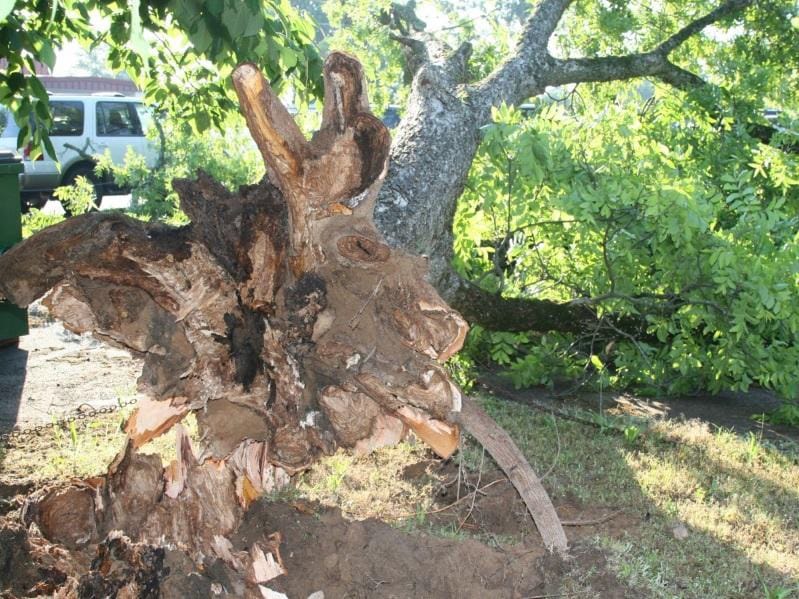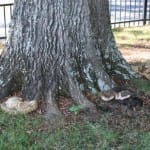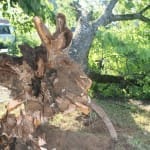Jean Williams-Woodward, UGA Extension Plant Pathologist
Damage from past years of drought has taken a toll on our trees. Drought stress, construction injury, soil compaction and root girdling injures tree roots and provides an entry point for wood decay fungi. Storm damage, improper pruning, and wounding of trunks and branches also leads to wood decay fungi entry and infection.
Wood decay fungi can be classified into two broad categories: white-rot and brown-rot fungi.
White-rotters are those fungi that rapidly breakdown lignin and eventually cellulose. The infected wood becomes soft, spongy and stringy. It is usually a root and butt rot by a white-rot fungus that causes hardwood trees to fail and fall (see images of Inonotus dryadeus).
Brown-rotters are those fungi that breakdown cellulose and eventually lignin. Wood crumbles and shrinks. These rots are often referred to as a cubical or dry rot.
Regardless of the type of rot and what fungus is infecting the tree, if you see conks or mushrooms growing on the tree trunk or root flare, then the tree is in advanced stages of infection and decay and there is a concern for possible tree failure. It takes years for infection and growth of the fungus in the wood to produce outward signs of conks and mushrooms.
At present, methods to accurately detect how much rot is present in the wood do not exist. There are methods to detect internal cavities in trees to determine the thickness of a trunk shell, but measurements of spongy wood is difficult. There is no cure for wood decay. The best management approach is preventing injury to trunks, branches, and roots.


